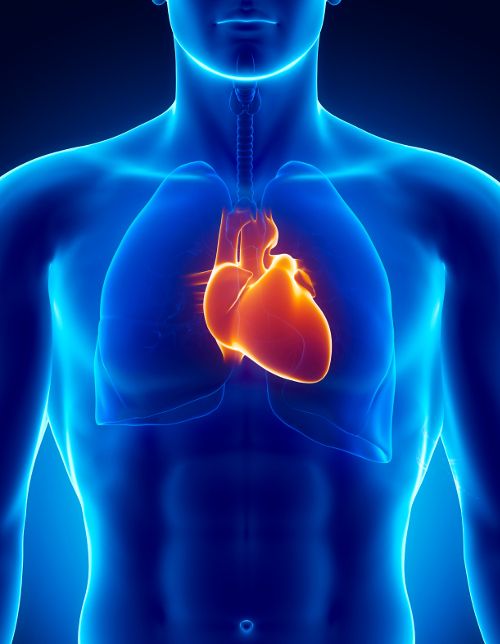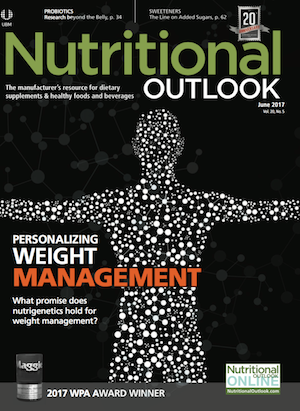Probiotics: Research Beyond the Belly...and to the Brain and Heart
Expanding the frontiers of probiotics research to the brain and the heart.
Photo © iStockphoto.com/janulla

Probiotics are a genuine supplement success story. Popular with consumers and clinicians alike, they offer a case study in how foundational science and public health both benefit when researchers work collectively-and exhaustively-to tease out what makes these good gut bugs work. And the more we learn about them, the more they surprise us.
The latest eye-opener: Not only do probiotics have a proven track record of promoting digestive and immune health; emerging findings associate some strains with marked improvements in cognition and cardiovascular wellness, to boot. Though research on the ties linking probiotics with the heart and the head remains in its early stages, the notion that there’s a real “there” there is gaining traction. And as David Keller, vice president of scientific operations for probiotic-ingredients firm Ganeden Inc. (Cleveland), points out, it makes sense that there would be.
“The digestive tract is considered a main hub in our bodies and has an effect on almost every other vital bodily function-making it crucial that we keep it in balance,” Keller observes. “As interest and awareness around probiotics increases, more extensive research is being done not only on their effects on the health of our digestive systems, but also on their correlation with other functions-including cognitive and cardiovascular.” As the scientific community starts exploring these benefits in greater depth, the heart and the head will be two areas worth keeping an eye on.
Healthy Balance
In fact, the probiotic space already merits attention in general. In a report released last year, Transparency Market Research forecast the global market for probiotics to expand at a compound annual growth rate (CAGR) of 7.40% from 2014 to 2020, rising from a value of US$62.6 billion to US$96 billion over that same time frame.
Yet much of probiotics’ growth remains driven by a focus on gut health, the report concludes. And it’s true that probiotics’ most convincing-and extensively researched-story lies in the gastrointestinal (GI) tract. In particular, the therapeutic use of probiotics in treating diarrhea has significant support, with controlled trials showing that Lactobacillus GG can shorten the duration of infectious diarrhea in infants and children-although not in adults-according to an article from Harvard Health Publications. The article also notes that the combined evidence of two large reviews indicates that probiotics can reduce antibiotic-associated diarrhea by 60% relative to a placebo.
But if it’s now common knowledge that probiotics promote gut health partly by maintaining a healthy balance between beneficial and harmful microorganisms in the GI environment, it stands to reason that they may do the same elsewhere among our bodies’ fine-tuned ecosystems-like, for instance, the vagina. When the prevailing Lactobacilli strains that keep vaginal pH high enough to prevent pathogen proliferation themselves begin to dwindle-as a result of antibiotic use, birth control, or other reasons-yeast infections, bacterial vaginosis, and urinary tract infections can arise. Supplementation with probiotics, studies show, has demonstrated a capacity to rebalance vaginal microflora and head off those conditions before they start.
Brain Bugs
All of which leaves consumers and medical professionals wondering what might come next. And according to those in the field, the gut-brain axis is a great place to start looking. “The term ‘gut-brain axis’ refers to the interaction between the digestive system and the brain, and the relationship between the health of your gut and brain functions,” Keller says. And its profile is rising. “We know that there’s a connection,” Keller notes, “and research is being done to see how they affect each other and what those specific effects are.”
The picture that’s emerging is one of a “bi-directional communication line” linking the central nervous system (CNS)-which comprises the brain, spinal cord, and optic nerves-with the enteric nervous system (ENS), explains Dr. Ralf Jäger, a scientific advisor with Pharmachem Laboratories (Kearny, NJ). The ENS “consists of more than 100 million nerve cells lining the gastrointestinal tract from the esophagus to the rectum,” Jäger continues, and it serves mainly to control digestion, “from swallowing to the release of enzymes that break down food to the control of blood flow that helps with nutrient absorption and elimination.”
But as is elsewhere so often the case, when the balance of gut microbiota tips out of whack and into a state of dysbiosis-whether via gastrointestinal irritation or other causes-the ENS then appears to send signals to the CNS that can actually trigger changes in mood.
Fortunately, Jäger says, “Certain probiotics have been shown to balance the gut microbiota and, consequently, improve brain health.” In fact, specific strains characterized as “psychobiotics” appear to increase levels of neurotransmitters linked to mood, such as serotonin and dopamine, or to spark production of the short-chain fatty acid (SCFA) butyrate in the colon, which may ameliorate anxiety, he says. Some probiotics even appear “to aid the response to a stressor by reducing levels of the stress hormone cortisol.”
But Jäger advises against irrational exuberance just yet. “While the gut-brain axis is an emerging focus of research, and while early results in mood and anxiety look promising, we’re still a long way from improving cognition and memory,” he says.
Heartening News
Until we arrive at that point, we can keep ourselves more than occupied assessing developing evidence for probiotics’ role in cardiovascular wellness, as the bacteria “have been linked to heart health through several different mechanisms, including antioxidant and anti-inflammatory properties and, most prominently, through the cholesterol-lowering effects of selective strains,” Jäger says.
Probiotics’ influence on cholesterol levels seems to play out via two distinct mechanisms. In one, they may hinder cholesterol reabsorption through intestinal walls by means of what Jäger calls an “aspecific assimilation.” For another, certain strains can act on bile-salt hydrolysis-that is, “deconjugating bile salts into their corresponding bile acids, enhancing the precipitation of bile acids, and facilitating their elimination with feces, thereby decreasing their recycling,” Jäger explains.
For example, a three-strain Bifidobacteria combination including B. animalis subsp. lactis MB 2409 and B. bifidum MB 109 has exhibited a track record of increasing bile-salt hydrolysis, Jäger notes, “efficiently isomerizing omega-6s into omega-3 polyunsaturated fatty acids.” When tested in dyslipidemic children aged 6 to 18 years, supplementation with such probiotics reduced LDL cholesterol by 8.2%, increased HDL cholesterol by 8.6%, and lowered triglycerides by 7.1%.
Friendly Fats
Some probiotics may also regulate the mechanics of polyunsaturated fatty-acid metabolism, Jäger goes on, offering the prospect “an innovative method for improving omega-6/omega-3 balance and heart health.” As it stands, the ratio of omega-6 to omega-3 fatty acids in the typical contemporary Western diet is weighted much more toward omega-6s than research suggests is healthy. No wonder, then, that “current recommendations include the increase in consumption of products rich in omega-3s or a decrease in consumption of products rich in omega-6s,” Jäger says. But for consumers fond of processed foods made with omega-6-rich oils from the likes of corn, soy, and safflower, that’s easier said than done.
So it’s heartening to learn that a systematic screening of Bifidobacteria present in the GI tract has recognized a number of probiotics capable of converting the omega-6 linoleic acid (LA) into conjugated linoleic acid (CLA), a fatty acid associated with a host of health benefits including those related to cardiovascular disease, high blood pressure, and insulin resistance. Specifically, Jäger explains, “B. longum and B. breve were identified to convert LA into CLA very efficiently, with B. longum BL04 DSM 23233 being best in class, with a 93% LA-to-CLA conversion rate.” Probiotic ingredient supplier Probiotical (Novara, Italy) has even patented the use of CLA-producing probiotic strains, Jäger notes.
Metabolic Measures
In the first in a series of white papers evaluating the state of science surrounding unconventional probiotic use, the International Probiotics Association (IPA) has also examined probiotics’ role in attenuating the effects of metabolic syndrome, which ropes in a number of cardiovascular conditions, including hypertension, dyslipidemia, obesity, and diabetes. And while the evidence for probiotics taken as a whole remains equivocal at this point, some findings look promising.
Consider, as the IPA’s white paper1 notes, that fermentation with probiotics can produce both milk and soy peptides capable of inhibiting angiotensin-1-converting enzyme (ACE) activity-a key step in controlling blood pressure. The same study found strong evidence supporting probiotics’ ability to lessen hypertension by way of mediating phytoestrogens, too.
The sheer number of research findings mentioned in the paper gives readers an idea just how active an area of inquiry this is-and how probiotics may become another tool in the kit for addressing metabolic syndrome. But again, science takes time, and researchers are still at the start of this and other probiotic journeys. As the IPA states in the paper, metabolic syndromes “reflect a complex tangle of interfaces with the microbiota representing only one part of the multiple factors at play.” With time, those and other probiotic factors may start sorting themselves out.
Also read:
2017 Ingredient Trends to Watch for Food, Drinks, and Dietary Supplements: Probiotics
A 2016 Update: Promising New Science on Probiotics
References:
- Lye HS et al., “The improvement of hypertension by probiotics: effects on cholesterol, diabetes, renin, and phytoestrogens,” International Journal of Molecular Sciences, vol. 10, no. 9 (August 27, 2009): 3755-3775

Polyphenols: The next generation of prebiotics is ready for liftoff
April 21st 2025Explore the prebiotic health benefits of polyphenols and the positive impact they may have on digestive and immune health. Polyphenols, such as those found in European black elderberry, may be an ideal solution for manufacturers trying to break into the digestive health space.

.png&w=3840&q=75)

.png&w=3840&q=75)



.png&w=3840&q=75)



.png&w=3840&q=75)


















